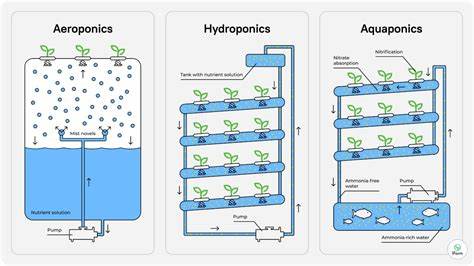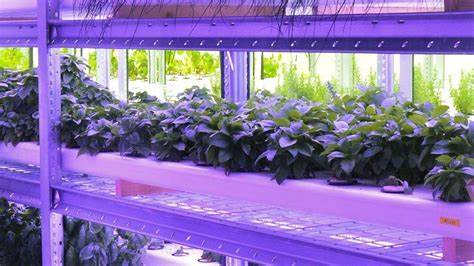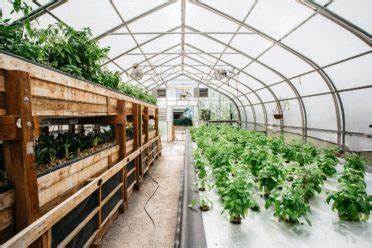
Introduction
Vertical farming has emerged as a revolutionary approach to sustainable agriculture, offering a solution to the challenges posed by limited arable land and increasing urbanization. This article explores the different types of vertical farming systems and their significance in addressing food security and environmental concerns.
Historical Background
The concept of vertical farming dates back to early pioneers who envisioned a future where food production could be intensified through vertical space utilization. Over time, these visionary concepts evolved into practical vertical farming systems.
Key Concepts and Definitions
Vertical farming encompasses various systems that utilize vertical space to cultivate crops. The different types include tower systems, rack systems, A-frame systems, wall-mounted systems, and hybrid systems. Each system has its own unique characteristics, advantages, and drawbacks.
Main Discussion Points
Tower Systems
Tower systems are characterized by their vertical arrangement and structure. They utilize innovative irrigation and nutrient delivery methods to optimize crop growth. While they offer several advantages, such as space efficiency, they also have limitations that need to be considered for economic feasibility.

Rack Systems
Rack systems involve the design and layout considerations of growing crops vertically on racks. These systems require proper lighting and ventilation to create an optimal growing environment. Crop selection and yields are crucial factors that determine the commercial viability and scalability of rack systems.
A-frame Systems
A-frame systems utilize a framework and support structure to grow crops vertically. Effective water and nutrient management are essential for their success. The choice of crop variety and productivity greatly influences the sustainability and energy efficiency of A-frame systems.
Wall-mounted Systems
Wall-mounted systems are installed on walls, making efficient use of vertical space. The planting techniques and vertical space utilization are key factors in their success. Adequate maintenance and pest control measures are crucial in these systems. Additionally, wall-mounted systems have promising applications in urban settings and architectural integration.
Hybrid Systems
Hybrid systems combine different vertical farming techniques to maximize space utilization and crop diversity. These systems leverage technological advancements and automation for optimal results. However, they also face challenges that need to be addressed for their successful implementation.
Case Studies or Examples
Vertical Farming System X: Case Study
This case study provides insights into the implementation details and success factors of a specific vertical farming system. It delves into crop selection, yield results, and the economic and environmental impact of the system.
Vertical Farming System Y: Case Study
This case study highlights the unique features and design considerations of another vertical farming system. It explores community engagement, social benefits, and the lessons learned for future plans.

Current Trends or Developments
Technological Advancements in Vertical Farming Systems
The integration of machine learning and AI has revolutionized vertical farming, enabling precise monitoring and control of environmental parameters. These advancements have significantly improved crop yields and resource utilization.
Integration of Renewable Energy Sources
Vertical farming systems are increasingly adopting renewable energy sources, such as solar and wind power, to reduce their environmental footprint. This trend contributes to the sustainability and long-term viability of vertical farming.
Collaborative Research and Innovation Efforts
Academic institutions, private enterprises, and government bodies are collaborating to drive research and innovation in vertical farming. These collaborative efforts aim to address challenges, develop new technologies, and enhance the overall efficiency of vertical farming systems.
Challenges or Controversies
Cost-effectiveness and Scalability of Vertical Farming Systems
The initial investment required for vertical farming systems can be a barrier to their widespread adoption. Additionally, scaling up these systems to meet the demands of large-scale commercial production poses logistical challenges that need to be overcome.
Environmental Impact and Resource Consumption
While vertical farming reduces the need for traditional agricultural practices, it still requires energy, water, and other resources. The environmental impact and resource consumption of vertical farming systems need to be carefully managed to ensure sustainability.
Regulatory and Legal Considerations
The implementation of vertical farming systems may face regulatory hurdles and legal considerations. Addressing these challenges is crucial to the successful integration of vertical farming into current agricultural frameworks.
Skepticism and Criticism from Traditional Farming Communities
Vertical farming has faced skepticism and criticism from traditional farming communities, who question its long-term viability and effectiveness. Building trust and fostering collaboration between vertical farmers and traditional farmers is key to overcoming these challenges.

Future Outlook
Potential for Vertical Farming to Address Food Security and Urbanization Challenges
Vertical farming holds immense potential in addressing the challenges of food security and urbanization. By utilizing vertical space in urban areas, vertical farming can provide fresh produce to local communities and reduce reliance on long-distance food transportation.
Expansion of Vertical Farming in Commercial and Residential Settings
As vertical farming systems become more efficient and cost-effective, they are poised to expand into both commercial and residential settings. This expansion will not only increase access to locally grown food but also promote sustainable living practices.
Integration of Vertical Farming with Other Sustainable Practices
The future of vertical farming lies in its integration with other sustainable practices, such as renewable energy sources and waste management systems. This holistic approach will further enhance the environmental benefits of vertical farming.
Technological Advancements and Automation in Vertical Farming
Continued technological advancements and automation will play a significant role in the future of vertical farming. From AI-driven monitoring systems to robotic harvesting, these innovations will optimize efficiency and productivity in vertical farming systems.
Conclusion
Vertical farming systems offer a promising solution to the challenges of limited land availability and increasing urbanization. By exploring different types of vertical farming systems, their advantages, challenges, and case studies, we can reinforce the significance and potential of vertical farming in achieving sustainable and secure food production.




